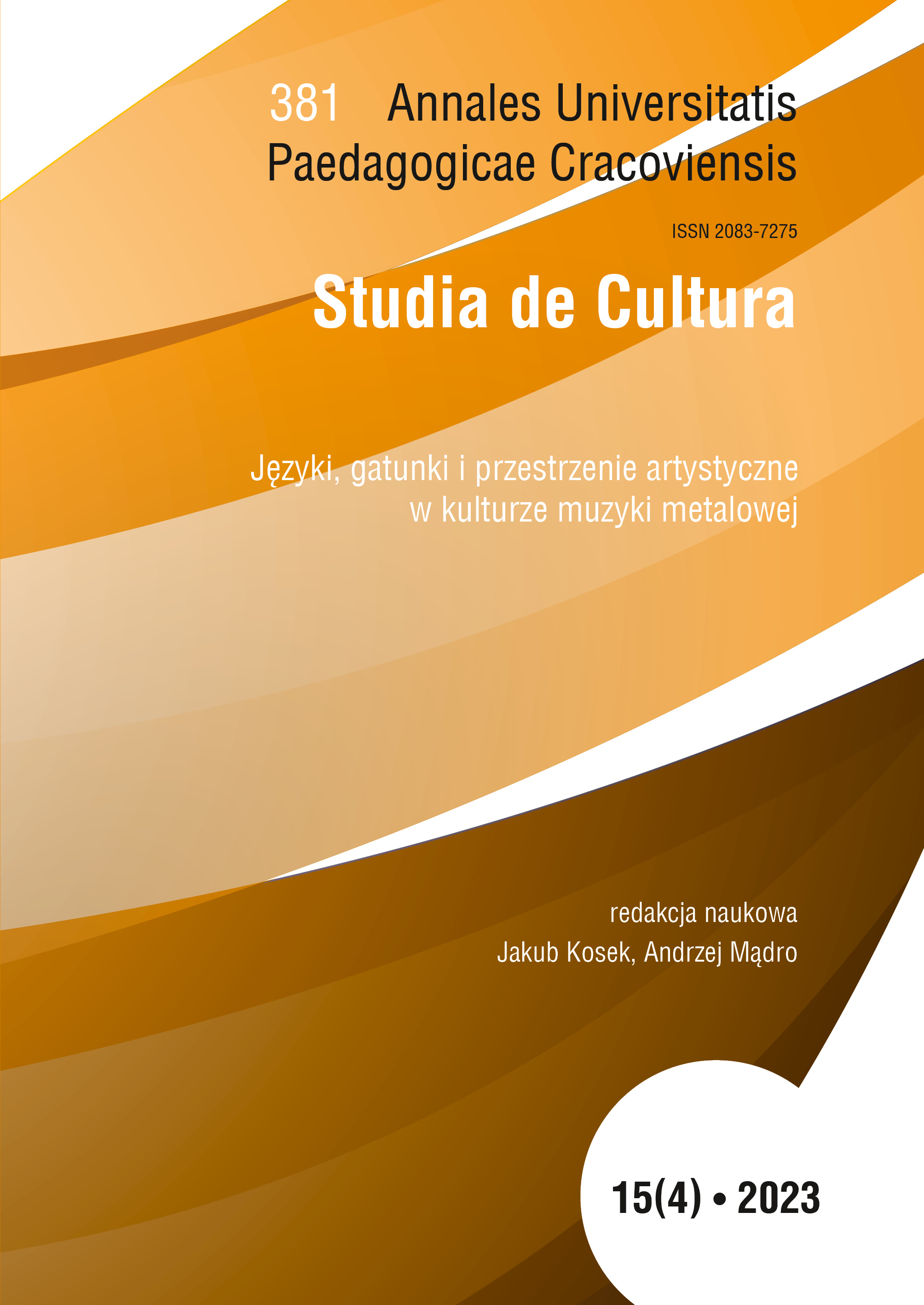Funkcje introdukcji i „outrodukcji” w kontekście albumów Thomasa Börje Forsberga
Intro and outro functions in the context of Thomas Börje Forsberg’s albums
Author(s): Bartosz MałczyńskiSubject(s): Theatre, Dance, Performing Arts, Fine Arts / Performing Arts, Music
Published by: Wydawnictwo Uniwersytetu Komisji Edukacji Narodowej w Krakowie
Keywords: intro; outro; Forsberg; Bathory; Quorthon; Swedish black metal;
Summary/Abstract: This essay concerns the constant meter on Thomas Börje Forsberg’s (Bathory, Quorthon) albumsof introductions and outroductions (“intros” and “outros”), placed at the beginning and end ofalbums or performances of songs. Introductions and outroductions refer to the imagination of thetransducer. Together with the album cover and lyrics, they create a kind of imaginary illustration;a kind of soundscape that cannot be heard only by auditory perception, focused on the melodicand rhythmic course. It heals, directs, specifically defines this perception, and equips to determinethe importance of using association scores. External sounds are instrumentalized; the soundsare clothed with additional semantic content. Introductions and outroductions determine thecomposition of the albums, fulfilling in them the scheme of a bracket or structural frame, whichcan, for example, be associated (especially in the first three albums by Bathory) with an attemptto imitate the course of religious conduct – a ritual order with its specific determination of applicationand closure. The introduction, therefore, is the task of the listener in the atmosphere ofsome reality (religious or quasi‑religious, mythological, socio‑political), while the outroductionis responsible for the culmination of this experience. In Forsberg’s albums, it is possible to addseveral generalized semantic circles into which introductions and outroductions fit. Each ofthese items has an album/track relation with text enabled.
Journal: Studia de Cultura
- Issue Year: 15/2023
- Issue No: 4
- Page Range: 75-83
- Page Count: 9
- Language: Polish

